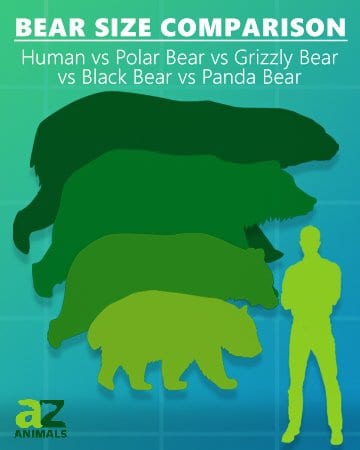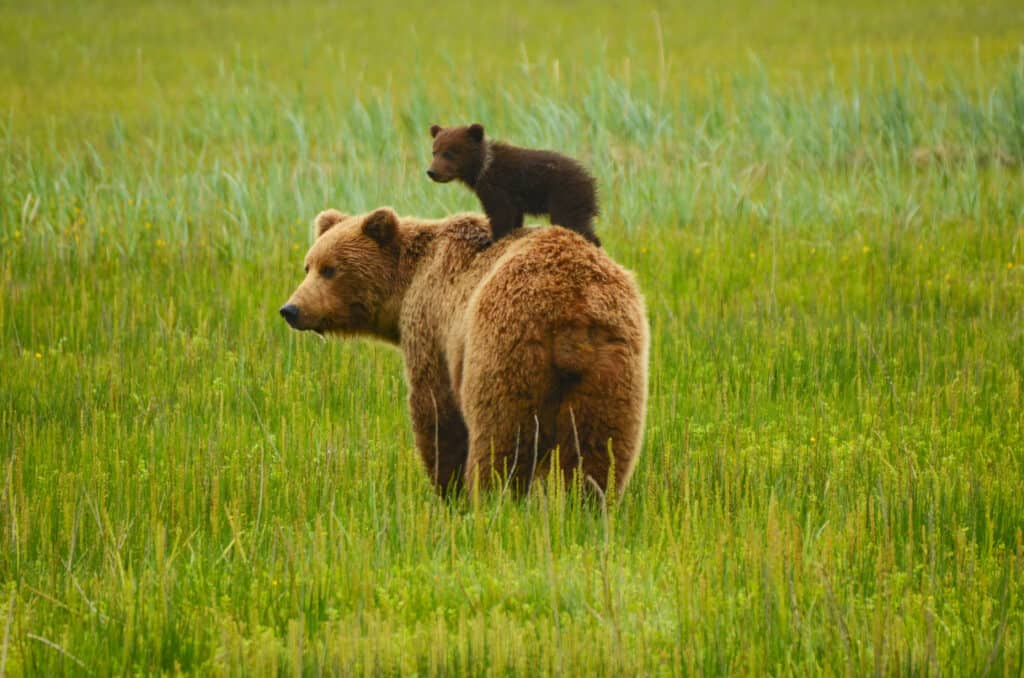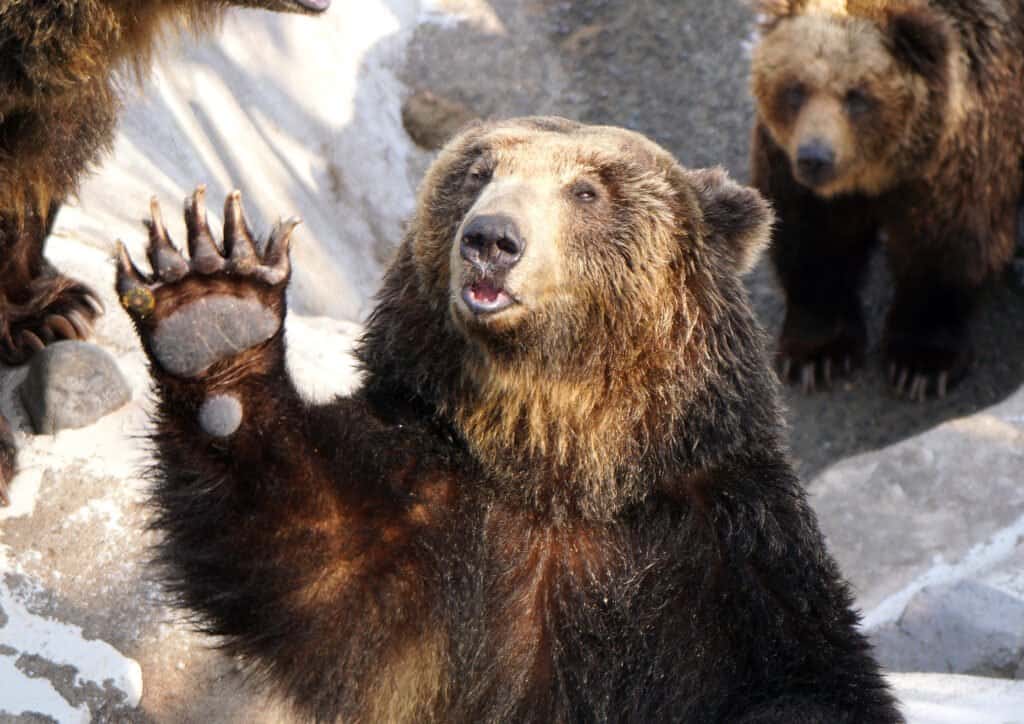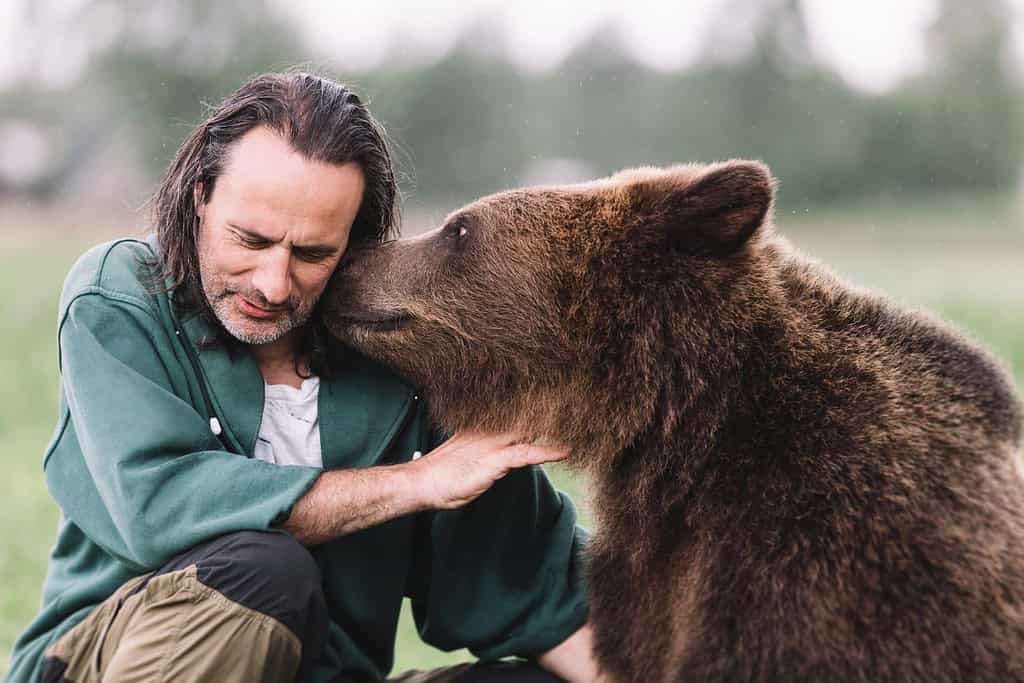You probably grew up with a teddy bear, but what if you could have one as a pet? Well, maybe you can: it’s legal in over a dozen states. Taming a bear is possible, and it’s been done for centuries. Domesticating one is a whole different story, though. We’ll explain the differences; then, you can decide whether or not this will be a good pet choice for you!
How Many Kinds of Bears Are There?

There are 8 different species of these magnificent creatures in the world: the North American black bear, brown bear, polar bear, Asiatic black bear, Andean bear, panda bear, sloth bear, and sun bear. The grizzly is considered a subspecies of the brown bear. In the continental United States, brown bears and black bears are not endangered, and their numbers have been increasing in recent decades. If you’d like to see one in the wild, one of the best places to do that is in the Great Smoky Mountains National Park, where motorists frequently spot black bears close to the road. Just stay inside your car and don’t feed them.
Why Can’t They Be Domesticated?

Bears reproduce only once every 2-4 years.
©David Rasmus/Shutterstock.com
Domestication means that people have permanently modified a species to live among humans and do what people want them to do. This takes place over a long period of time as people breed animals to enhance desirable qualities and make the animals more compliant with their owners. It works best with species that are not picky eaters, that mature and reproduce rapidly to return a profit to breeders, and that have a social hierarchy. With pack animals, for example, humans can step in as the “pack leader” and hijack the animals’ natural instincts to follow their alpha.
Bears do not fit most of these criteria. They reproduce every 2-4 years, and they are solitary, independent-minded animals. There’s no real reason to domesticate them, anyway. Practically speaking, it takes a lot of resources to maintain such a large animal. And it doesn’t really provide a benefit to its owners that isn’t provided more cheaply by other animals, such as dogs.
What About Taming One?

Even if this guy was raised with people, he’s unpredictable.
©VANESSAL/Shutterstock.com
Even though bears are not good candidates for domestication, they can be tamed. This is done by capturing a baby or breeding one in captivity and raising it around people. People have done this since ancient times in the Roman Empire, India, Russia, and medieval Europe. Trained bears have been popular circus performers and featured in numerous movies and television shows. Some examples are Gentle Ben, Against the Wild, Grizzly Adams, and Walker, Texas Ranger. However, they still have strong wild instincts and are never fully submissive to people. They can be unpredictable. When startled or irritated, they could easily injure or kill a person with a swipe of their paw or a snap of their jaws.
Where Can You Own One?

16 U.S. states permit residents to own bears, but doing so is expensive and dangerous.
©Kazantseva Olga/Shutterstock.com
In the United States, 16 States permit owning a bear, with different local rules and regulations. Some of them require you to purchase an expensive permit. You might have periodic visits from wildlife authorities to make sure the animal is well cared for. States permitting bears include Alabama, Delaware, Idaho, Indiana, Mississippi, Missouri, Nevada, North Carolina, North Dakota, Oklahoma, Pennsylvania, Rhode Island, South Carolina, Texas, and Wisconsin.
What Are the Care Requirements?

Zoos and sanctuaries are able to create spacious habitats and scientifically-managed care for bears.
©Just dance/Shutterstock.com
Caring for a bear properly is expensive and difficult. They need a habitat enclosed with a strong, high fence. They should have a sturdy, warm shelter as well as room to roam outdoors. You’ll want to provide straw, pine needles, leaves, and hay to make their den comfy. They’ll need an enormous amount of food. In the wild, they eat insects, fish, small animals, plants, fruits, and berries. Zoos feed their bears multiple times a day. They eat a veterinarian-approved diet with a lot of fruits and vegetables, nuts, meat, and honey. They eat more in the fall to pack on weight for winter hibernation.
Depending on the species, males can reach 400-1,500 pounds! They’re highly intelligent, so they will need sturdy toys and activities for enrichment. Otherwise, they can become bored, depressed, or aggressive. Of course, you’ll want your gigantic furry friend vaccinated and checked over periodically by a house-call-making exotic animal vet. This can prove to be expensive.
Clearly, taking proper care of one of these amazing animals is daunting. It’s really something that takes the resources and expertise of a zoo or sanctuary. You can enjoy them in those places without the bear-sized expense and trouble!
Thank you for reading! Have some feedback for us? Contact the AZ Animals editorial team.








